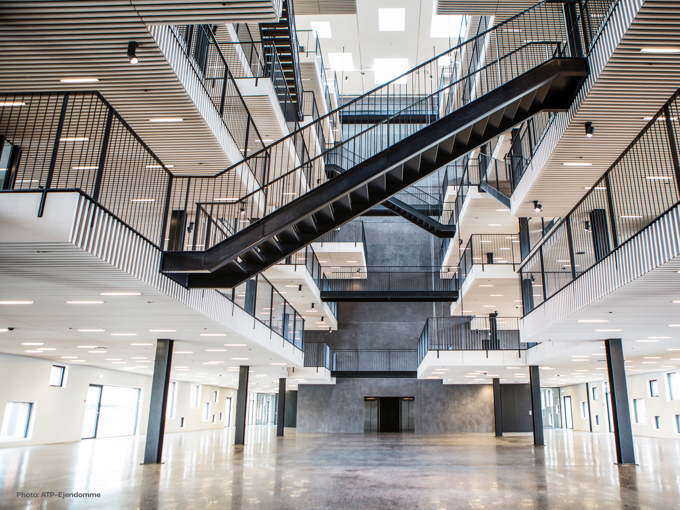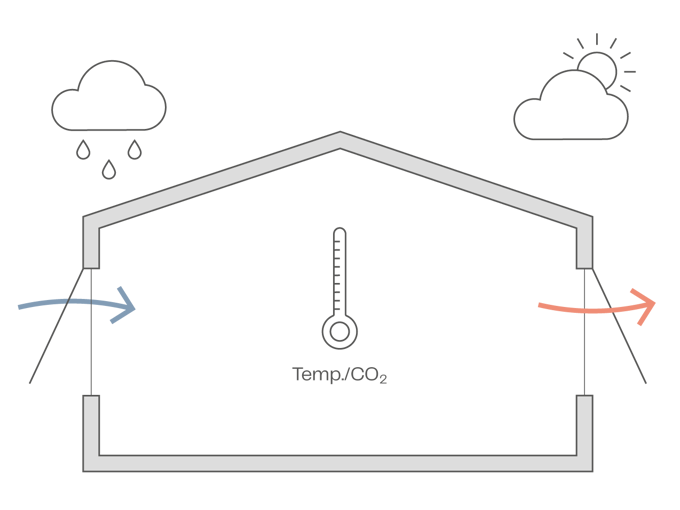Night flushing
Night flushing, also known as night cooling or night ventilation, can be a vital sustainable component in your future building projects. This strategy leverages the cooler temperatures of the night to reduce the dependency on energy-intensive cooling systems, enhancing a healthier and more cost-effective environment. Adopting night flushing in your projects can cause significant energy savings while ensuring occupant comfort, aligning with contemporary environmental goals.
Contact a SpecialistWhat is night flushing?
Night flushing is a passive cooling strategy that utilises the natural drop in temperature after sunset to remove accumulated heat within a building's thermal mass. During the day, buildings absorb heat from occupants, equipment, and sunlight, which can lead to overheated spaces. A night flushing system from WindowMaster counters this by opening parts of the building envelope, such as windows or vents, to allow cool night air to circulate, expelling the stored heat and preparing the building for the next day. This process not only reduces the load on mechanical cooling systems but also integrates easily with your architectural designs.
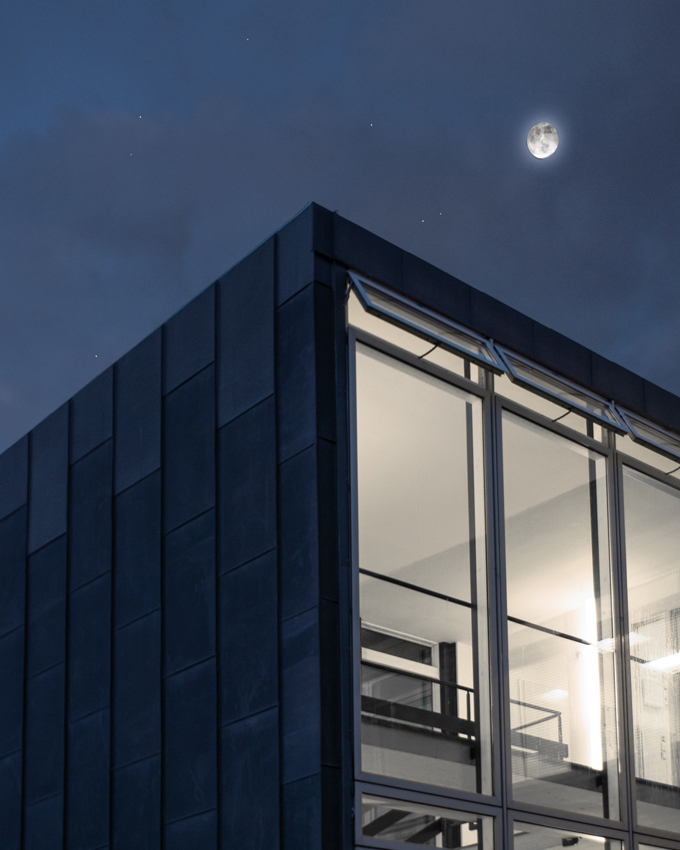
How does night flushing work?
Night flushing can be implemented through various ventilation strategies, catering to different building designs and needs. In structures equipped with natural ventilation, this can mean the automated opening of windows to allow cool air to flow through, facilitated by WindowMaster's intelligent systems that ensure security and efficiency. For buildings with mechanical ventilation, night flushing can involve the strategic expulsion of warm air through ducts.
Mixed-mode ventilation combines both approaches, adapting to the specific requirements of deeper or more complex spaces. Enhancing night flushing effectiveness involves selecting materials with high thermal mass and integrating design features like solar shades to prevent excessive daytime heat gain. By considering these factors, architects can maximise the benefits of night flushing, creating more sustainable and comfortable spaces. At WindowMaster, we provide sustainable solutions for your projects.
Why do buildings need night flushing?
As modern buildings become better insulated and sealed, the internal heat generated by occupants and devices can lead to uncomfortable temperatures, even in cooler climates. This situation is exacerbated by the global push for energy efficiency, leading to structures that retain heat. Night flushing addresses this by providing a natural, cost-effective cooling solution that reduces the reliance on air conditioning systems.
Our passive ventilation systems leverage cool night temperatures, enhancing a more consistent and comfortable indoor environment in buildings, making the environment more comfortable for occupants.
Reference cases with night flushing
How to enhance the effects of night flushing
To enhance the effects of night cooling for a new project, you can consider building materials with high thermal mass. What determines how much heat and cool the mass can store are its heat capacity and density. Exposing the thermal mass will also help enhance the thermal effect, as covering it will hinder its ability to store heat or cool. Another way to enhance night cooling is by using solar shades in the design. Solar shades prevent the building from gaining too much heat from the sun, increasing the effectiveness of night flushing as well as providing several other benefits to the building.
Learn more about passive ventilation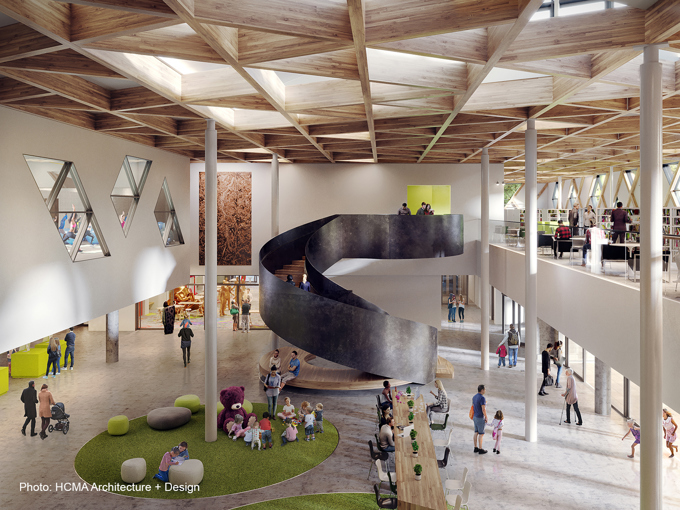
Key benefits of night flushing
-

Reduces daytime use of mechanical cooling systems
-

Lowers energy bill
-

Enhances the performance of the building envelope
-

Improves occupant health and comfort
-

Low carbon method for building cooling
In which climates is night flushing most effective?
The efficiency of night cooling depends on the thermal properties of the building and on the local climate conditions, i.e. nighttime wind speed and the temperature swing of the ambient air. It is particularly effective in climates that have a marked swing between the day- and nighttime outside temperatures. This is not to say that night purging cannot be effective in warmer climates. Even when internal and external temperatures are very similar, night flushing can still provide a means for airborne pollutants to be exhausted and allow fresh air to enter.
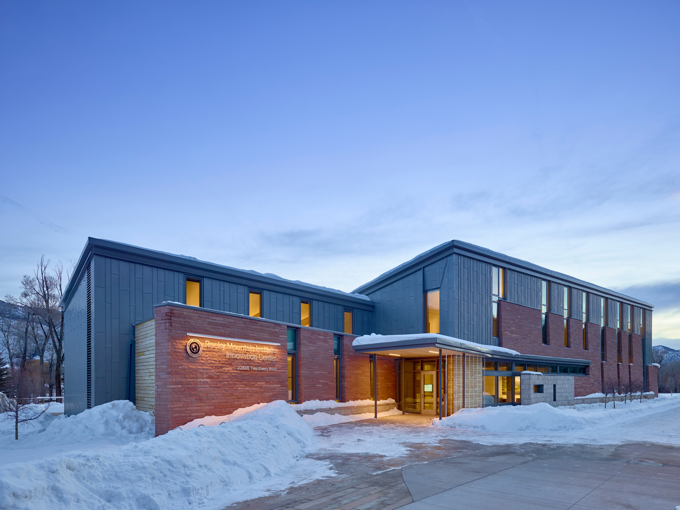
Common concerns with night flushing
Security is a common concern when night flushing is considered. This concern is alleviated by selecting high-level openings that minimise risks such as break-ins. Insurance companies often prefer small openings at higher levels when night ventilation is present.
The risks of entrapment can be lowered by using intelligent actuators which are programmed with a pressure safety function. Furthermore, by using an intelligent actuator, in combination with an intelligent control panel, the building management system can receive feedback about the status and degree of the openings.
Normally, with a night purge ventilation strategy, the windows do not have to open fully to achieve effective cooling. Therefore, the system will help the building cool while maintaining the security of the building. The intelligent control system should also include wind and rain sensors which are able to detect when rain and wind speed limits are exceeded in order to close the windows and protect the building.




